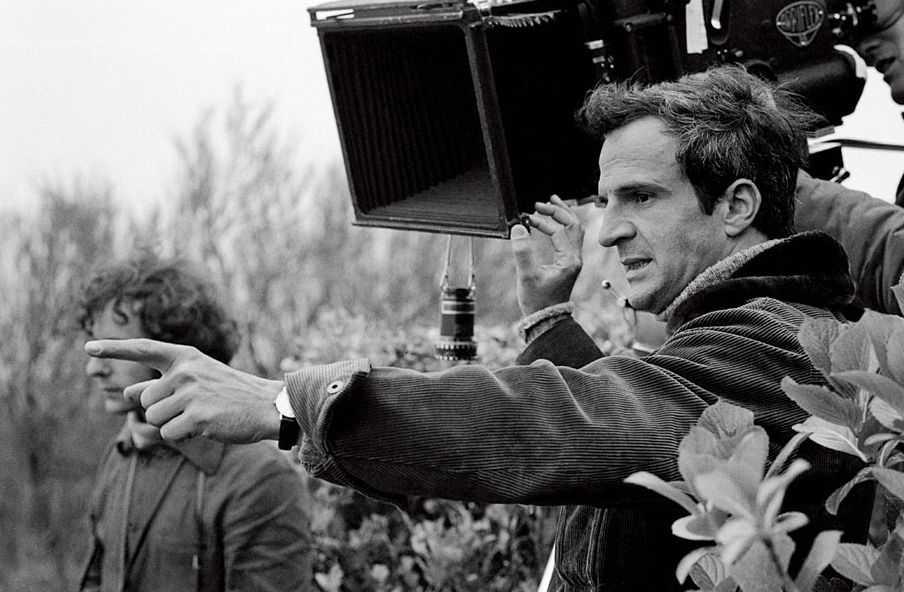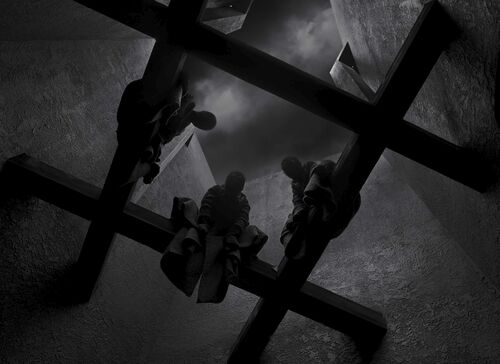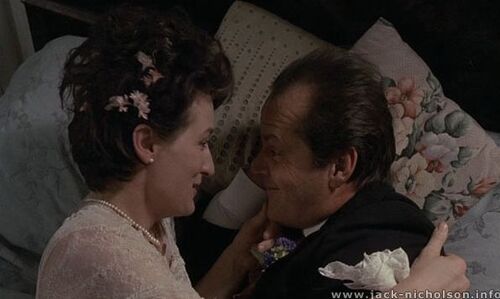
Truffautbruary, a month dedicated to Francois Truffaut: Jules and Jim
 Francois Truffaut came into my world in the most brilliant way with not a hint of warning.
Francois Truffaut came into my world in the most brilliant way with not a hint of warning.
I had started the second year of my undergrad a week late and barely had enough time to pick up a syllabus before I found myself in a screening room for Jules and Jim. The film left absolutely no impression on me after my initial viewing, or so I thought. As the months passed, however, I found myself reminiscing about the story that was so personal and emotionally raw on a regular basis. "But not this one Jim, alright?" the simple line resonated with me until I finally was able to track down a copy of Truffaut's masterpiece so I could watch it again. After the second viewing, I was emotionally spent by the time the credits rolled, but I was hooked on Truffaut. I had weekly meetings with my film professor simply so we could discuss the film; I wanted to immerse myself into Jules and Jim as much as I possibly could. The lasting impression that Jules and Jim left on me made me want to know who its creator was—who was this person that was so in tuned to the human spirit that made the most beautiful film I had ever seen in my life? As my film interests typically do, I wanted to see everything this master had ever done, until I found out he died at the young age of 52 in 1984. The realization that there would never be another Francois Truffaut ever again made me slow down on his filmography, taking in only one every two years, yet watching Jules and Jim without limit. Few have made the impact the 5'6" Parisian left on this young cinephile, including the devastation of realizing just how much pure cinema the world was robbed of by his early death.
Truffaut first discovered the novel Jules and Jim, written by Henri-Pierre Roche in 1955, two years after its publication. Roche's novel had amassed practically no reviews and had passed by largely unnoticed making Truffaut's discovery of it in a second-hand bookstore all the more destined. "What caught my attention was the title: Jules and Jim. I was captivated immediately by the resonance of the two J's." Truffaut would remark in an interview. Unable to get the idea of using the novel to create something the cinema had never seen before: "To show two men who love the same woman in such a way that "the public" are unable to make an emotional choice between the characters, because they are made to love all three of them equally.", Truffaut mentioned Jules and Jim in a review he did on the film The Naked Dawn during his time writing for Cahiers du cinema. The following week the filmmaker received a letter of thanks from Henri-Pierre Roche, as well as a recommendation and a copy of another novel Two English Girls (a novel Truffaut would adapt into a film in 1971) The director and the author kept up a regular correspondence, with Roche encouraging the ideas of Truffaut to adapt the book into a film. In 1961, Truffaut began doing exactly that, he was finally fulfilling his wish of turning Jules and Jim into a film. The author was no longer alive to assist with the "well-spaced and tight" dialogue Truffaut appreciated so much, yet he vowed to remain faithful to the book that had captured his heart. After casting Jeanne Moreau, who would give Truffaut courage every time he was overcome by doubt, as Catherine, Austrian actor Oskar Werner to play Jules, and Henri Serre to play Jim (cast largely because of Serre's resemblance to Roche) Truffaut was more than prepared for what would become the film of his life. The concept was simple, a decades-long affair between two best friends and the woman they both loved deeply, a woman who was like no other, and the impact of her love on each of their lives. Jules and Jim is anything but simple, however, as Truffaut was able to do what many can only aspire to do: capture the pure boundless human emotion and depict it on the screen in a way that resonates with each individual that sees it, even if they don't immediately realize its impact.
Jules (Oskar Werner), an introspective Austrian and Jim (Henri Serre) a confident Frenchman begin a friendship that defies understanding. What begins as an exchange and discourse over art develops into a bond that seems able to withstand anything, including fighting against each other in WWI. After the war has ended, the duo goes on sharing art and women with each other, until Jules falls in love with Catherine (Jeanne Moreau), a free-spirited woman with an unpredictable temperament, prone to emotional outbursts. Despite the easy-going inexperienced Jules being an odd fit for Catherine, he asks Jim not to chase Catherine, so he can have her love all to himself. Despite Jules’ request, he invites Jim on many of the couple's outings and the trio spends most of their time together. Even after Catherine and Jules marry and have a child, Jim is invited to live in their home with them. Over time, an intimacy begins to develop between Jim and Catherine, which Jules is aware of. Instead of risking losing his friend or his marriage Jules allows the intimacy to blossom which creates a domino effect of emotions between the three of them. Life no longer is about what each wants individually, but rather what each other wants and expects and what kind of life they want the other to fulfill. The decision to allow the three-way relationship has enduring effects on all involved due to the complicated nature of the two men's love for Catherine, as well as their devotion to each other. Bonds will be tested, as Jules and Jim face another war, this time, off the battlefield."
You said, "I love you," I said, "Wait." I was going to say, "Take me," you said, "Go away." Arguably the most memorable quote from Jules and Jim also acted as a heart-wrenching opening, conveying to the audience just how much of an emotional experience they were in for. As we are introduced to each character, Truffaut takes his deliberate time revealing what Jules and Jim mean to each other. It is Truffaut's prowess as a director that allows the audience to truly understand the depth of devotion that Jules and Jim share for each other. Without his labored efforts, the rest of the story would pass by unnoticed because this truly is a story about three people in love rather than a love triangle with each point seeking out the object of their affection. The story relies on the understanding that neither Jules, Jim, nor Catherine will seek to fulfill their own needs at the expense of each other. Technically, Truffaut showed mastery on only his third feature film. His use of freeze frames was fantastic and essential in allowing the audience to realize the profound effect on the emotional state of the men involved with Catherine, each "moved by a symbol they could not understand." Truffaut also uses the overlay technique a few times to great success, placing Catherine's face over a few scenes really driving home the idea that every thought or activity Jules and Jim ever took part in was driven by Catherine. In just three short years since his first feature, The 400 Blows—a masterpiece in its own right, Truffaut further revealed his mastery for capturing the complexity of human emotion like few others before him.
Few films tackle the emotionally intense themes Jules and Jim take on. Truffaut delves deep into pain, the kind of pain that is caused by yearning in love. Love and lust is a theme constantly at the forefront of the film, as well, along with a precise distinction between the two. Jules, lacking the romantic experience of Jim, attempts to shield Catherine from Jim for fear that he will only lust after her. When it becomes clear that Jim actually loves Catherine, as Jules does, he relents and decides to share his love of Catherine with Jim. Jealousy is powerfully triumphed in this film due to the great love the three share for each other. It doesn't so much matter to any party involved that they can't have the one they desire all to themselves because of the love they all share as a unit. Jules loves Catherine and shares a devotion to Jim, so he supports a union between Jim and Catherine because he needs to be a part of each's life and wants happiness for all parties involved, and vice-versa for Catherine and Jim. Devotion, like I have never since seen replicated on screen, is the driving force behind each character's actions and thoughts. The way Truffaut managed to capture that devoted motivation shows impeccable insight to the human spirit and cements him as the purest most personal filmmaker I have ever seen. Running the gamut of emotional commentary, Truffaut also successfully illustrates loneliness, especially experienced by Catherine, and its power over life. Catherine is clearly a damaged soul, she has met and overcome many obstacles in her life, most of which, are only alluded to. There are aspects of both Jules and Jim that she depends on for her very survival, necessitating that they both remain in her life. Catherine has been unable to commit to another due to her expectation of being abandoned, as only hinted to in a couple of scenes between her and Jules. It is this damage that makes her reckless and prompts Jules and Jim to be more cautious in their interactions with her. Each principal in this story is imperfect, each has hurt someone deeply, and yet the audience longs for an ending that will satisfy each character. To be able to show every unlikeable aspect of a human being, yet, still endear that person in the hearts of the audience was a skill no one in the history of cinema has been more proficient at than Francois Truffaut. By the film's conclusion, we may not have that ending that leaves each better off and happy, but what we do get is the realization that we're all in search of our statue, that one person that is perfect to us and for us despite their obvious flaws; just as Jules and Jim traversed gardens in search of their statues before they happened upon the same one, and once we find that statue, we will do whatever it takes to keep it in our view.


